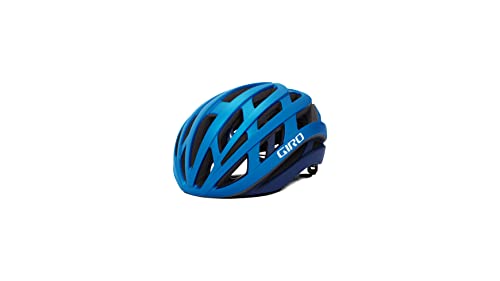Brands engage in fierce competition to develop the finest bicycle helmets. The intense rivalry drives continuous innovation in the quest for the best road helmet, commuter helmet, or aerodynamic racing helmet.
When deciding on a purchase, factors like comfort, aerodynamics, and breathability all play a significant role in your considerations.
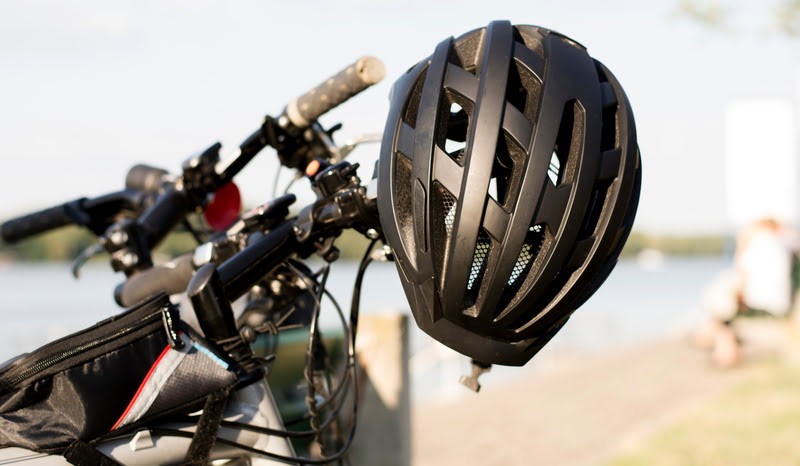
Safety, without a doubt, is of utmost importance. I have personally tested numerous helmets that offer additional protection, notably the Multi-directional Impact Protection System (MIPS). Presently, over 120 brands worldwide utilize this system.
It is worth mentioning that certain brands, such as Schwinn, employ their technology to address rotational impacts. Virginia Tech, an independent testing organization, consistently ranks helmets with MIPS highly in terms of safety, making it a feature worth considering.
To assist you in making an informed decision, my guide will cover all the essential aspects of how to choose a bike helmet. So, without further ado, let us commence the process.
What is a Bicycle Helmet

A bicycle helmet is a protective headgear designed specifically for cyclists. It is worn on the head and serves to minimize the risk of head injuries during bicycle rides or accidents.
Bike helmets typically consist of a hard outer shell made of polycarbonate or similar materials and a foam inner lining, often made of expanded polystyrene (EPS), which provides impact absorption.
The shell helps to distribute the force of an impact, while the foam lining cushions and absorbs the energy to protect the head.
The primary purpose of a bicycle helmet is to reduce the risk of head injuries, such as concussions, skull fractures, or traumatic brain injuries, in the event of a fall, collision, or other accidents while cycling.
Wearing a properly fitted helmet is highly recommended for cyclists of all ages and skill levels, as it significantly improves safety and can potentially save lives.
Safety And Security Tips
Bike helmets are an essential piece of safety equipment for anyone who rides a bicycle. They are proven to reduce the risk of head injury by up to 85%, and can even save lives.
Studies have shown that wearing a helmet is the single most effective way to prevent head injuries while cycling. A study by the National Highway Traffic Safety Administration found that cyclists who wore helmets were 45% less likely to be injured in a crash than those who did not wear helmets.
Helmets work by absorbing the impact of a fall or collision, which can help prevent skull fractures, brain damage, and even death. They are also relatively inexpensive and easy to find, so there is no excuse for not wearing one.
Here are some additional reasons to wear a bike helmet:
- It sets a good example for children and other cyclists.
- It can help you to feel more confident and comfortable while riding.
- It is required by law in many states and municipalities.
So next time you go for a bike ride, make sure to wear a helmet. It is the smart thing to do, and it could save your life.
Here are our top 3 picks for the bike helmet:
Last update on 2025-11-30 / Affiliate links / Images from Amazon Product Advertising API
Factors to Consider when Choosing a Bicycle Helmet
When choosing a bicycle helmet, there are several important factors to consider to ensure you select the right one for your needs. Here are some key factors to consider:
1. Helmet Fit and Retention System
Above all else, for a helmet to be effective in the unfortunate event of a crash, it must remain securely on your head. Similar to footwear, helmets vary in fit across different brands, making it crucial to try them on before making a purchase.
Most helmets employ a dial-based retention system (such as Giro’s Roc Loc 5 or Kask’s Octo Fit) to fine-tune the fit. However, it’s important to note that the vertical adjustment range—the positioning of the rear adjustment supports on your head—differs among helmets, so this is an aspect worth considering.
Equally significant are adjustable and comfortable straps. They should be able to be fastened snugly under your chin, ensuring maximum effectiveness.
2. Comfort
Comfort is also a crucial aspect to consider when selecting a bicycle helmet, especially if you spend extended periods cycling. I agree head sizes and shapes vary among riders, but certain design elements contribute to the overall comfort of a helmet, regardless of the user.
The design of the padding, adjustability of the full circumference headband, and the chinstrap design all contribute significantly to the comfort of a helmet. Adequate padding in the forehead and temple areas is particularly important since most headband adjustment systems on helmets tighten in the back and push the head against the front of the helmet.
During testing, I found that the location, coverage, and shape of the padding and foam liner were more important than the thickness of the padding itself.
The most comfortable internal headband systems form a complete loop around the head, ensuring a secure and comfortable fit. Some helmets only have a partial circle around the head and anchor into the helmet liner near the temples, which tends to be less comfortable.
The design of the chinstrap also plays a significant role in bicycle helmet comfort. Helmets incorporating thinner webbing straps and a Y-buckle are preferred by me since they allow the straps to lie flat against the face, enhancing overall comfort.
By considering these comfort factors, you can select a bicycle helmet that provides a comfortable fit for your head shape and ensures a pleasant riding experience, even during long days in the saddle.
3. Material
The majority of bicycle helmets are primarily constructed using expanded polystyrene (EPS) foam as their core material. This foam structure serves as the foundation and is then covered, to varying extents, with a rigid polycarbonate shell (and occasionally a touch of carbon fiber) to enhance durability and safeguard the EPS foam from accidental impacts and scratches.
This fundamental design has remained unchanged for many years. However, emerging manufacturing techniques and materials, such as 3D-printed Polyamide 11 or other proprietary polymers, are now starting to make their way into the market.
Manufacturers naturally assert that these alternative designs offer advantages over traditional bicycle helmets. Nonetheless, whether these purported benefits truly manifest during real-world use is yet to be determined.
4. Aerodynamics
In today’s cycling landscape, the aerodynamic trend seems to be influencing every aspect, resulting in higher costs and rendering your current gear seem outdated. However, when it comes to helmets, embracing aerodynamics may indeed be sensible.
The potential energy savings achieved with aerodynamic helmets should not be underestimated, particularly if your focus is on achieving high speeds.
Of course, there are trade-offs to consider. Enhancing aerodynamic efficiency often entails sacrificing ventilation holes or accepting unconventional bicycle helmet shapes that, to be honest, can sometimes appear rather eccentric. Nevertheless, if your primary objective is to ride faster, the importance of aesthetics might take a back seat.
5. Safety Certifications
Look for helmets that meet recognized safety certifications. In the United States, the Consumer Product Safety Commission (CPSC) certification is the most common and ensures that the bicycle helmet meets minimum safety standards.
Additionally, certifications like EN1078 (European standard) or AS/NZS 2063 (Australian and New Zealand standard) indicate that the helmet has passed specific safety tests.
6. Ventilation
Optimal airflow within a bicycle helmet is crucial for maintaining a cool head, consequently regulating your body temperature as a whole. Ventilation plays a vital role in enhancing both the comfort and performance of a helmet.
Interestingly, the number of vents alone does not determine the quality of ventilation. Certain helmets strategically position vents and incorporate internal channeling to ensure optimal airflow. It is worth noting that in some helmets, the presence of an inner MIPS liner may obstruct certain air vents.
However, the finest MIPS helmets are designed with MIPS liners that align with the helmet’s vents, allowing for uninterrupted airflow.
7. Adjustability
Superior helmets employ a chinstrap system that fastens under the chin and splits into two straps in front and behind the ear, where they connect to the helmet. Typically, a plastic Y-buckle joins these straps just below the ear. In many helmets, the Y-buckle allows for adjustments of the straps both in front and behind the ear.
Helmets equipped with an adjustable Y-buckle generally receive better ratings in terms of adjustability. Nevertheless, certain helmets lacking an adjustable Y-buckle still manage to accommodate a wide range of head shapes and sizes.
Most helmets also feature an adjustable dial located near the back, allowing you to tighten or loosen the headband of the helmet. While these tension dials usually function as intended, some may be more challenging to manipulate, especially when wearing gloves or dealing with cold hands.
By paying attention to these adjustability-related factors, you can select a bicycle helmet that ensures both comfort and security, enabling it to stay securely in place during your rides while providing the protection you need.
8. Visor
A visor is a small brim or shield attached to the front of the helmet. It helps to shade your eyes from sunlight, rain, or debris, providing better visibility and comfort. Visors are particularly useful for mountain biking or commuting in various weather conditions. Some helmets come with removable visors, allowing you to customize your bicycle helmet based on your preference or riding style.
9. Weight
The weight of a bicycle helmet can have an impact on its comfort, especially considering the strain it places on your neck. In certain cycling disciplines, weight becomes a more significant consideration.
Opting for a lightweight helmet means reducing the burden on your neck muscles. Additionally, a lighter helmet can provide an advantage during climbs by minimizing the extra grams that could potentially slow you down.
However, it is important to note that as a bicycle helmet becomes lighter, there is a trade-off in terms of reduced material available to protect your head in the event of a crash. More material generally translates to increased protection.
Road bike helmets, known for their lightweight nature, tend to offer less overall protection compared to mountain bike helmets, which prioritize better coverage and therefore tend to be heavier. Full-face helmets, which provide the most comprehensive coverage, offer the highest level of protection but are also the heaviest due to their extensive coverage area.
10. Shock Absorption Technology
Opinions regarding the optimal bicycle helmet technology for head protection still vary to some extent. However, the consensus among most researchers is that rotational forces, which often result in concussions and other significant injuries, pose the greatest risk.
In response to this concern, the prevailing technology utilized today is the multi-directional impact protection system (MIPS). This innovative system aims to mitigate rotational forces during accidents by allowing the helmet’s outer shell to slide slightly upon impact.
MIPS technology has gained significant popularity and is incorporated into bicycle helmet models offered by numerous manufacturers. Additionally, there are alternative designs on the market, such as POC’s SPIN pads and Bontrager’s Wavecel liner, both of which aim to reduce rotational forces through different mechanisms, such as compression.
Note: A detailed discussion of these technologies is done down below in the article.
11. Use Case
Bicycles serve diverse purposes, ranging from commuting to downhill mountain biking, and helmet manufacturers produce helmets specifically designed for these different scenarios.
While it is perfectly fine to wear a mountain bike helmet during your commute, it might include additional features like a visor or a chin guard that may not be necessary or worth the extra cost. It is advisable to seek a bicycle helmet that aligns with your intended use of the bike, ensuring that you choose one that best suits your needs.
12. Durability
The EPS foam commonly used in bicycle helmet liners is a relatively soft material that is susceptible to dents and abrasions. Helmets with the highest durability feature a shell that extends around the base of the foam liner, providing comprehensive coverage and minimizing the exposure of the liner to potential dents and impacts.
Such helmets tend to sustain less damage during regular daily use. However, the inclusion of this full-wrap shell for added durability also contributes to the overall weight of the helmet.
Regardless of their construction quality, most bike helmets are designed to effectively function for a single impact only. Therefore, if you experience a crash where your helmet makes contact with an object, it is crucial to replace it to ensure continued safety.
Some bicycle helmet manufacturers even offer crash replacement programs to encourage users not to continue wearing a compromised bicycle helmet that may not provide sufficient protection in subsequent incidents.
13. Types of Bicycle Helmets
Bike helmets come in various types, each designed for specific types of cycling and rider preferences. Here are some common types of bike helmets:
Road Bike Helmets
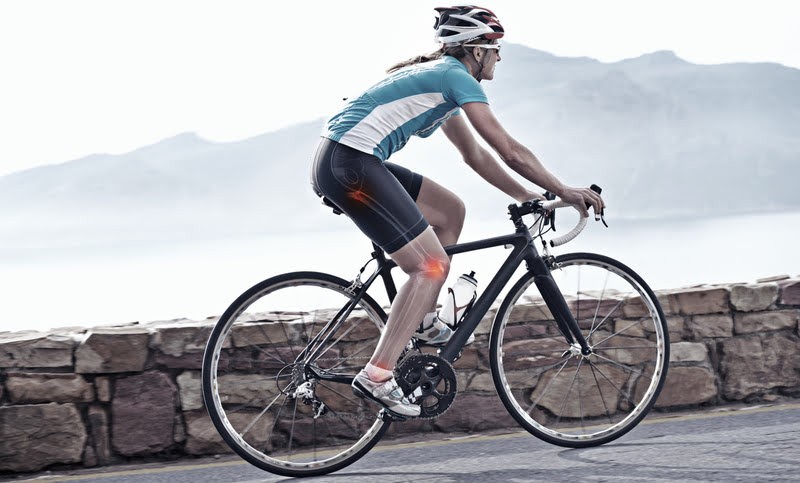
Helmets specifically designed for road cycling are typically characterized by their lightweight construction and superior ventilation. These helmets are tailored to meet the specific requirements of road cyclists, often prioritizing weight reduction and breathability over enhanced protection.
As road accidents typically involve a lower likelihood of colliding with objects after falling off the bike, these helmets may provide less coverage at the back of the head compared to some other bicycle helmet types.
Additionally, road bike helmets typically do not feature an integrated visor. This distinction is largely based on tradition, serving as a visual indicator to differentiate between road helmets and those intended for mountain biking. Consequently, road cyclists often opt to wear a cycling cap underneath their helmets to shield their eyes from the sun, compensating for the absence of a visor.
Mountain Bike Helmets

In comparison to road bike helmets, mountain bike helmets generally offer enhanced protection. They feature extended coverage at the back of the head, acknowledging the higher likelihood of falls and accidents in mountain biking.
As a result, mountain bike helmets provide more substantial overall protection compared to their road counterparts. However, this increased protection comes at the cost of added weight. Additionally, due to the additional material required for enhanced protection, mountain bike helmets have the potential to offer slightly less ventilation than road helmets.
Full Face Helmets

Full-face bike helmets, also known as downhill helmets, bear a resemblance to motorcycle helmets and are specifically engineered for high-speed riding comparable to motorcycle speeds. These helmets prioritize protection as their foremost objective.
Offering complete coverage, they encompass the entire head, including the chin region, ensuring comprehensive safeguarding in the event of a face-first impact. Due to the extensive coverage and added material required, full-face helmets tend to be the heaviest among bicycle helmet styles.
Additionally, as they are primarily designed for activities that involve less pedaling, they have the potential to generate more heat, making them potentially warmer to wear during use.
Skate Helmets
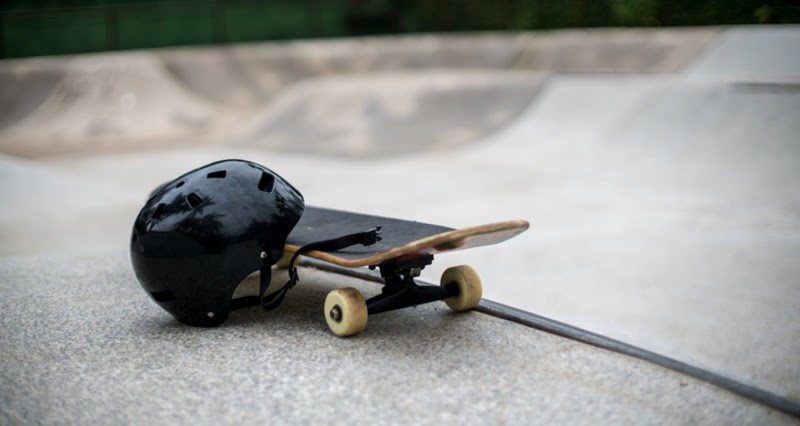
Skate helmets are designed to provide coverage to the top and back of your head, resembling the helmets commonly worn for activities like roller skating or skateboarding. Compared to other bicycle helmet types, skate helmets typically exhibit a heavier weight and offer less ventilation.
However, their appearance is less sport-oriented, making them an excellent choice for bike commuters who prefer a more casual and non-competitive cyclist aesthetic.
Kids’ Helmet
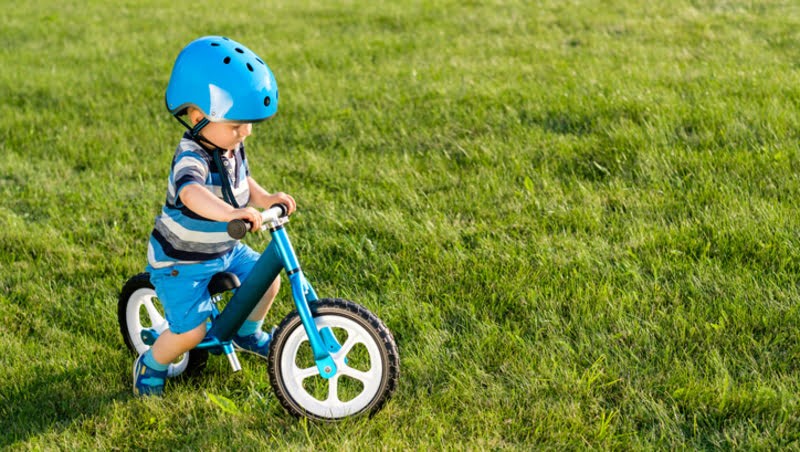
Helmets designed for children are tailored to meet the needs of younger riders. These helmets emphasize comfort, proper fit, and age-appropriate safety features. Typically, kids’ helmets incorporate additional padding and adjustable sizing systems to ensure a secure and comfortable fit.
Moreover, they often showcase vibrant colors or engaging designs, aiming to make the helmets visually appealing and captivating for children.
14. Style and Aesthetics
Although not directly linked to safety, the style and aesthetics of a bicycle helmet can hold significance for many riders. Opting for a visually pleasing bicycle helmet can contribute to an enhanced biking experience.
Helmets are available in a variety of designs, colors, and finishes, catering to diverse preferences. It is important to prioritize safety features and fit the above style alone. However, discovering a bicycle helmet that aligns with your style can bring an additional element of enjoyment to your rides.
A Detailed Explanation of Trending Bicycle Helmet Safety Technologies
1. MIPS
MIPS is a widely used bicycle helmet safety technology designed to reduce rotational forces on the brain during angled impacts. It consists of a low-friction liner inside the helmet that allows for a small amount of movement between the outer shell and the head.
In the event of an impact, this movement helps to redirect and absorb rotational energy, reducing the risk of brain injuries. MIPS technology is commonly found in helmets for cycling, skiing, and other high-impact sports.
2. Specialized ANGi
Specialized ANGi is an innovative helmet technology that combines impact detection and emergency notification capabilities. ANGi includes a small sensor and accelerometer integrated into the helmet, which measures both linear and rotational forces during impacts.
If a significant impact is detected, ANGi can automatically send an alert to your emergency contacts, providing them with your GPS location. This feature adds an extra layer of safety, especially for solo riders who may encounter accidents during their activities.
3. Smith Koroyd
Smith Koroyd is a helmet safety technology that utilizes a unique honeycomb-like structure to provide improved impact protection. It consists of numerous co-polymer tubes bonded together to form a lightweight and breathable core inside the helmet.
During an impact, these tubes compress, crumple, and deform, effectively absorbing and dissipating energy from different angles. This technology helps to reduce the risk of injuries caused by linear and rotational forces, providing enhanced protection for the head.
4. Bontrager Wavecel
Bontrager Wavecel is a helmet safety technology that focuses on reducing the occurrence and severity of concussions. It involves the use of a proprietary cellular structure called Wavecel, which is integrated into the helmet’s construction.
The Wavecel material is designed to flex, crumple, and glide during impacts, effectively absorbing and redirecting the forces away from the head. This technology claims to be up to 48 times more effective at preventing concussions compared to standard EPS foam helmets, providing a higher level of safety for cyclists.
It’s important to note that these technologies are constantly evolving and improving, with new advancements being made in bicycle helmet safety. When choosing a helmet, it’s recommended to consider the specific requirements of your activity and ensure that the helmet meets relevant safety standards.
How to Adjust a Bicycle Helmet Properly
To begin, start by adjusting the tightness of the helmet. Many helmets sold feature an adjustment wheel that can be fully opened to place the bicycle helmet on your head and then twisted to achieve a snug fit. (Keep in mind that fit systems may vary, as some helmets utilize interchangeable interior foam pads for adjusting fit snugness.)
Next, buckle the chin strap and ensure it is tightened properly. The straps should form a comfortable V shape as they rest beneath each ear. (If the straps don’t form a comfortable V, adjust the buckle beneath each ear until they do.)
Finally, with the chin strap securely buckled, open your mouth wide. As you do so, the helmet should exert gentle pressure on the top of your head. If it doesn’t, tighten the strap slightly and repeat the process. (Avoid overtightening the strap to the point of discomfort.)
Additional Bicycle Helmet Fit Tips From Experts
Sizing can vary among different bicycle helmet brands, so it is important to verify the head circumference indicated for the specific size you are considering. Just like shoes, helmet molds can also have brand-specific shapes. Therefore, it is advisable to try on helmets at a store to determine which brand fits your head shape best.
If you find yourself between sizes, it is generally recommended to choose the smaller size. Alternatively, you can explore other bicycle helmet models or enhance the fit of a larger helmet by wearing a cycling cap or beanie. In some cases, adults with smaller heads may find that a kid’s size fits them comfortably.
A properly fitting bicycle helmet should feel snug without being excessively tight. It should sit level on your head without tilting back, and the front edge should be positioned one inch or less above your eyebrows to ensure proper forehead protection.
Test the fit by gently pushing the helmet from side to side and front to back. If it shifts noticeably by one inch or more, adjustments are needed to achieve an optimal fit.
Effective Bicycle Helmet Care Suggestions
When it comes to cleaning a helmet, it is advisable to refrain from using chemical solvents. Manufacturers typically recommend using a soft cloth or sponge, along with mild soap and water. In the case of removable pads, they can be washed separately.
It is crucial to avoid storing a bicycle helmet in areas such as attics, garages, or car trunks where heat can build up. Excessive heat exposure may result in the formation of bubbles on the helmet parts. It is essential not to wear a helmet that has been damaged by heat.
Loaners should be wary of lending their bicycle helmet to others. It is important to know the specific usage and history of your helmet throughout its lifespan.
What size bike helmet do I need?
To determine the right size of a bike helmet, begin by measuring your head circumference, as helmet sizing is based on this factor.
To measure your head circumference, use a flexible tape measure and wrap it around the widest part of your head—approximately one inch above your eyebrows. Alternatively, you can use a string to encircle your head and then measure its length with a yardstick.
Here are the general bike helmet size chart parameters for bike helmet sizing:
- Extra small: below 20″ (51cm)
- Small: 20″–21.75″ (51cm–55cm)
- Medium: 21.75″–23.25″ (55cm–59cm)
- Large: 23.25″–24.75″ (59cm–63cm)
- Extra large: above 24.75″ (63cm)
- One size fits all: features a highly adjustable fit system
When to Replace a Bicycle Helmet
It is vital to understand that bike helmets for adults are intended to absorb a single impact. Therefore, it is crucial to consider any helmet involved in an accident as damaged, even if its appearance seems unaffected. In such cases, it is recommended to replace the helmet with a new one.
Furthermore, regardless of whether you have experienced any crashes or not, it is advisable to replace your bicycle helmet after five years. Factors such as pollution, exposure to UV light, and general weathering can gradually weaken essential components of the helmet over time. By replacing the bicycle helmet every five years, you ensure that it remains in optimal condition and provides reliable protection.
Best Bike Helmets for Riding Like a Pro in 2024
1. Giro Aether Mips Helmet
No products found.
Specifications
Safety features: MIPS
Sizes: S/M/L
Colors: 13
Weight: 269g (small)
The Giro Aether MIPS is my absolute favorite road bicycle helmet for me. It has proven to be a game-changer in terms of overall performance during my testing. I was particularly impressed by its exceptional ventilation capabilities and cutting-edge safety features.
While there are slightly lighter options available, such as the Kask Protone helmet, the Aether’s weight of just 269g (size small) is still impressively low.
Equipped with the gold standard MIPS Spherical technology, the Aether ensures both added safety and remarkable comfort. The integration of this technology between the two shells, along with reinforced construction, instills a strong sense of confidence in the helmet’s safety performance.
Additionally, the sleek and stylish design, offered in a variety of colors, makes it suitable for all styles of riding. As a result, I consider it to be the best all-around road bicycle helmet available. The only reason not to purchase it will be if none of the available size options fit your head shape.
Pros
- Highly breathable
- Ample air channels for effective cooling
- Lightweight – weighs under 270g (size small)
Cons
- Slightly bulbous appearance
2. Rapha + Poc Ventral Lite Bike Helmet
- MADE FOR THE ROAD_ Lightweight bike helmet designed to deliver coolness and protection like never before. The multi-use cycling helmet is ideal for urban cycling or long rides in the mountains
- EXTREMELY LIGHTWEIGHT_ Weighing less than 200g in a size M (EN1078 safety standard), the helmet is among the lightest ever produced, the Ventral Lite is for when every gram counts
- ADJUSTABLE FIT_ Comfortable, lightweight bike helmet with 360° adjustment system for a secure, personalised fit. One-handed dial operation means it's quick and easy to adjust at any time
- BEST-IN-CLASS VENTILATION_ Structurally optimised helmet with precision air ventilation ports and internal channels that force the air through the helmet for improved ventilation
- UNIBODY SHELL_ A fully wrapped ultra light shell enhances the bike helmet's structural integrity. The optimised EPS liner ensures low weight and crash protection
Last update on 2025-11-30 / Affiliate links / Images from Amazon Product Advertising API
Specifications
Safety features: No additional
Sizes: S, M, L. Standard and wide fits
Colors: Two
Weight: 170g (small as tested), 200g (medium as claimed)
Among the limited collection, the Ventral Lite stands out as an exceptionally lightweight and well-ventilated helmet. During my review period, the small-sized model weighed an incredible 170g (200g for the medium size), providing a true featherweight experience.
The fit can be adjusted using a 360-degree nylon string retention system controlled by a rear dial, which is both easy to operate and highly effective. However, it’s worth noting that the strap adjustments are somewhat limited, with only a single slide adjuster on the chin buckle. Although this was slightly restrictive, I appreciated that the helmet is available in two widths, allowing for a more tailored fit.
Rapha’s design contribution to the Ventral Lite is characterized by understated elegance, with options including a white version with thin grey lines or a black/grey/navy version with thin white lines. This subtle touch reflects the timeless class that Rapha is renowned for.
To achieve the lowest possible weight, this bicycle helmet does not incorporate additional safety features like MIPS. However, other versions of the Ventral do offer such features, though not in the Rapha special edition design.
Pros
- Well-ventilated for optimal airflow
- Available in standard and wide-fit versions
- The understated Rapha design adds a stylish touch
- Incredibly lightweight – weighs under 200g (small)
Cons
- Limited strap adjustability
- Lacks rotational safety features
3. Lazer Vento Kineticore Bike Helmet
- Built for Speed: the Vento KinetiCore was designed with a reduced frontal surface area for superb performance in a “sprint position” at a 15-degree angle
- Find your size: Measure the circumference of your head 2cm above your eyebrows (about the width of a finger). Once you have your head circumference, use our size guide to select the correct size based on the model helmet you are interested in. If you are between sizes, we recommend that you select the smaller size helmet
- Lighter by Design: Vento is 24% lighter and uses 90g less plastic than its predecessor, and is built more sustainably with a reduced carbon footprint without any compromise in performance.
- The Power of Cool: cleverly-positioned ventilation channels increase airflow through the helmet to enhance cooling, elevate your comfort and performance
- Precise Fit Comfort: Advanced ScrollSys fit system cradles the skull while allowing intuitive, quick adjustments for a precise, stable fit
Last update on 2025-11-30 / Affiliate links / Images from Amazon Product Advertising API
Specifications
Safety: KinetiCore (Lazer’s in-house tech)
Sizes: S/M/L
Colors: 4
Weight: 291g (medium on test)
The Lazer Vento is specifically designed as an aero helmet, prioritizing speed over extensive ventilation. Nevertheless, compared to other aero helmets, it still performs admirably in keeping your head cool. While I couldn’t directly compare its aerodynamic qualities to other helmets, I did feel a noticeable boost in speed when leaning forward during test rides.
In terms of aesthetics, this bicycle helmet boasts a sleek and low-profile appearance, avoiding a bulky look. Its comfort level is commendable, and the new retention system represents a significant improvement over Lazer’s previous design—though it’s not as user-friendly as a conventional dial.
However, this new system does offer compatibility with ponytails. Unfortunately, the glasses port falls short, being too wide to accommodate most sunglasses effectively.
Although the helmet leans towards the higher end of the price range, its weight of 291g for a medium size goes largely unnoticed when wearing it. This is partly due to the additional crash protection systems implemented.
While the price may be steep, it’s worth noting that the helmet can be found at more affordable prices online. Additionally, its independently verified 5-star safety rating serves as a compelling selling point.
Pros
- Provides a sensation of speed
- Offers a secure and comfortable fit
- Independently verified with a 5-star safety rating
- Decent ventilation considering it’s an aero helmet
Cons
- Glasses storage is challenging to use
- Not the lightest option, weighing 291g for a medium size
4. POC Ventral Spin Helmet
- Shell Material: unibody shell
- Claimed Weight: [medium] 9.5oz (270g)
- Manufacturer Warranty: 1 year
- Ventilation: 15 front ventilation ports, internal air channels
- Fit Adjustment: rear dial adjustment system
Last update on 2025-11-30 / Affiliate links / Images from Amazon Product Advertising API
Specifications
Safety features: SPIN
Sizes: S/M/L
Colors: 12
Weight: 251g (medium)
The POC Ventral Spin helmet stands out for its versatile capabilities, making it a strong contender in multiple road bicycle helmet categories. During my testing, I was thoroughly impressed by the Ventral Spin, considering it the top choice for a road bike helmet that combines aerodynamic features with excellent breathability.
Unlike typical aero helmets with a solid and bulky appearance, the Ventral Spin features large airports that deviate from the norm. POC claims that the helmet’s unique design, optimized through computational fluid dynamics (CFD) testing, enhances aerodynamic performance by reducing drag and minimizing air turbulence, ultimately helping you ride at higher speeds.
In terms of safety, the Ventral Spin incorporates POC’s proprietary SPIN (Shearing Pad INside) technology. This innovative feature utilizes silicone bladders and pads to dissipate rotational impacts, which are the most common types of impacts in cycling accidents. By absorbing and redirecting crash energy, the helmet aims to reduce the risk of head trauma.
While it may seem like a minor detail, anyone who has worn an aero bicycle helmet knows the challenge of storing sunglasses when not in use. The fully wrapped EPS POC Ventral Spin tackles this issue with sunglass grippers. While they are designed to work best with POC sunglasses, I found them to securely hold sunglasses from various brands.
In terms of pricing, the Ventral Spin competes directly with the Giro Aether MIPS, offering full-fledged aero features that set it apart.
Pros
- Lightweight for an aero helmet
- Provides a comfortable and secure fit
- Impressive sunglasses-retaining feature
- Tested and proven aerodynamic qualities
- Offers better breathability compared to other aero bicycle helmet options
Cons
- Divisive appearance
5. Giro Helios Spherical Mips Cycling Helmet
- Spherical Technology, Powered By MIPS Impact Management
- Construction: Independent, In-Mold Liners With Spherical Ball-And-Socket Design, Polycarbonate Shell, Hardbody Lower Shell
- 15 Wind Tunnel Vents With Internal Channeling, Roc Loc 5 Air Fit System
- Product Weight: 270 (Size Medium CPSC, CE)
- Certification: Complies With The Us CPSC Safety Standard For Bicycle Helmet For Persons Age 5 And Older, E.U.: CE EN1078
Last update on 2025-11-30 / Affiliate links / Images from Amazon Product Advertising API
Specifications
Safety features: MIPS
Sizes: S – L
Colors: 5
Weight: 260g (medium)
I was thoroughly impressed by the Giro Helios Spherical MIPS helmet, considering it the ultimate all-around bicycle helmet available.
Bridging the gap between road and off-road adventures, the Helios is also featured in the brand’s women’s helmet lineup. Its wide range of sizes and colors, along with an exceptionally comfortable fit, make it appealing to a broad audience.
This lightweight bicycle helmet utilizes the same Spherical MIPS protection system as the Giro Aether, challenging its more expensive counterpart in more ways than one. It even manages to save 10 grams in weight while providing an equivalent size.
The brand attributes this weight reduction to the Helios Spherical helmet having a less complex ventilation structure compared to the Aether. In my experience, the difference was barely noticeable, as both helmets offered equal levels of comfort.
The only notable drawback is the absence of an eyewear dock feature. However, if you’re seeking a fantastic all-rounder option at a great value, the Giro Helios Spherical MIPS is undoubtedly one of the best road bike helmets on the market.
Pros
- Features MIPS for a high level of safety
- Lightweight and comfortable for smooth and rough terrain
- Offers aerodynamic properties comparable to more expensive helmets
Cons
- Lacks an eyewear dock for storing sunglasses
6. Specialized S-works Prevail 3
Specifications
Safety features: MIPS AirNode
Sizes: S, M, L
Colors: 7
Weight: 280g
Specialized has introduced the updated S-Works Prevail 3 helmet, aiming to improve both airflow and safety compared to its predecessor. Considering that the previous Prevail model was already renowned for its extensive venting, this was no easy feat. However, having tested the bicycle helmet myself, I believe that Specialized has achieved its goals.
Through its Air Cage design, Specialized has managed to enhance ventilation by nearly 25% compared to the Prevail 2, all while maintaining a minimalist appearance. The foam bridges, typically found in helmets, have been reduced to promote better airflow.
Despite the streamlined design, safety remains uncompromised. The cage-like structure acts as a suspension bridge, effectively distributing impact forces across the entire helmet.
The Prevail 3 also incorporates MIPS AirNode, seamlessly integrating the MIPS system—designed to mitigate rotational forces in a crash—into the helmet padding. This not only reduces weight but also improves ventilation by eliminating an additional layer for air to pass through.
During my ride, the large vents proved highly effective. Even in scorching temperatures of 32 degrees Celsius, the airflow provided by this bicycle helmet kept my head cool.
Weighing in at 280 grams, the S-Works Prevail 3 is light but may not be the lightest helmet in its class. However, for riders who frequently tackle hot climates, its exceptional ventilation makes it a worthy option to consider. Just be mindful that the large vents might attract insects along the way.
Pros
- Excellent ventilation
- Highly regarded for safety
Cons
- Large vents may attract insects
7. Giro Eclipse Spherical Bike Helmet
- COMPREHENSIVE PERFORMANCE AND PROTECTION: Engineered in Giro’s helmet test lab.
- SPHERICAL TECHNOLOGY: Ball-and-Socket Design, powered by MIPS, redirects impact forces without compromising comfort, ventilation, weight, or style.
- MIPS PROTECTION SYSTEM: the market-leading protection system designed to address rotational motion, for an added measure of protection in certain impacts.
- PROGRESSIVE LAYERING: Dual-density EPS foam liner designed to address high and low-speed impacts for more comprehensive energy management.
- EXCEPTIONAL AIRFLOW, LIGHTWEIGHT, AND DURABLE: 14 Wind Tunnel vents with internal channeling allow air to flow through the helmet to enhance cooling power. In-moId construction eliminates excess weight and permanently fuses tough polycarbonate outer shell to the interior liner.
Last update on 2025-11-30 / Affiliate links / Images from Amazon Product Advertising API
Specifications
Safety features: MIPS Spherical
Sizes: S/M/L
Colors: 6
Weight: 270g (small)
The Giro Eclipse Spherical helmet utilizes Giro’s innovative MIPS Spherical technology, which involves the MIPS system sandwiched between two layers of EPS foam. During my testing, I found this bicycle helmet to offer a comfortable and unrestricted fit.
The ventilation was particularly impressive, even in scorching temperatures exceeding 35 degrees Celsius. Additionally, the straps fit securely without any annoying flapping, and the front vents provide a convenient spot to insert sunglasses.
It’s worth noting that some users may find the helmet’s appearance slightly mushroom-like. Despite this, the Giro Eclipse Spherical helmet delivers exceptional speed, comfort, ventilation, and strap performance, making it a compelling choice for those seeking an aero helmet.
Pros
- Comfortable fit
- Remarkably fast
- Straps stay in place without flapping
- Impressive ventilation for an aero helmet
Cons
- May give a mushroom head appearance
Conclusion — Bicycle Helmets
This guide aims to simplify your decision-making process when purchasing a helmet. The cycling helmets listed here represent the absolute top-tier options available. Therefore, select the one that aligns with your specific requirements and start enjoying your ride.
Be assured that I will continue to acquire, utilize, and assess the finest helmets in the industry to ensure that this list remains up-to-date.
Please share your thoughts and feedback on the article in the comments section. Please like, share, and follow our Facebook Page, and keep visiting our website for more guides like this.
How to Choose a Bike Helmet — Frequently Asked Questions
Is there an e-bike-specific bicycle helmet?
The Netherlands stands as the sole country with a dedicated bicycle helmet standard for e-bikes, which was implemented in 2017. Known as NTA 8776, this standard focuses on safeguarding against higher impact speeds and offers coverage over a slightly larger area of the head.
In the United States, there are presently no helmet regulations specifically tailored to e-bike usage. However, certain manufacturers like Specialized and Smith offer commuter helmets that adhere to the NTA 8776 standard, despite the absence of mandatory requirements.
Should a road bike helmet feature padding?
Certainly. Padding serves the dual purpose of enhancing comfort and effectively absorbing sweat from your head. An optimal design for a road bike helmet will include padding that can be easily detached for washing and replacement.
Different helmets for bicycles may feature varying styles and thicknesses of padding, so it is advisable to try on several models to determine which ones suit you best.
Is a lighter road bike helmet better?
Like most cycling gear, the price of road bike helmets often increases as their weight decreases. The top-performing road bike helmets tend to be the lightest in their respective categories, providing enhanced comfort by reducing strain on your neck.
For competitive cyclists, a lighter bicycle helmet offers the additional benefit of improving the power-to-weight ratio. While a difference of 50g may not matter much to most cyclists, it can be significant for elite professionals who are constantly seeking marginal gains to enhance their performance.
Related:







